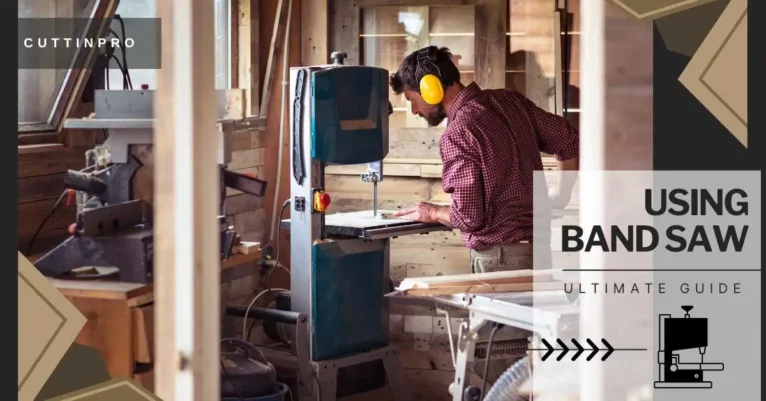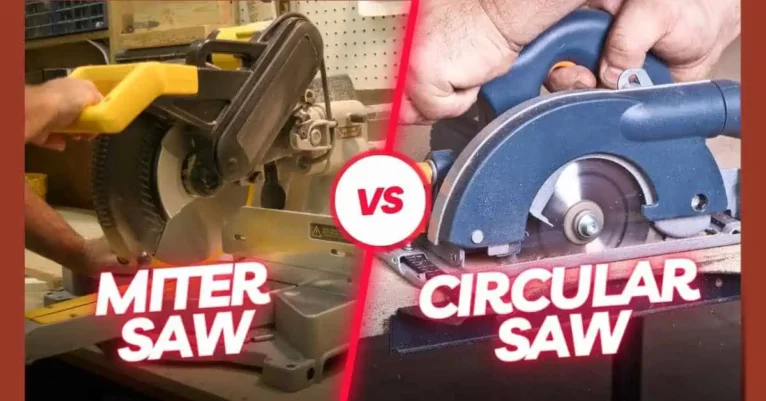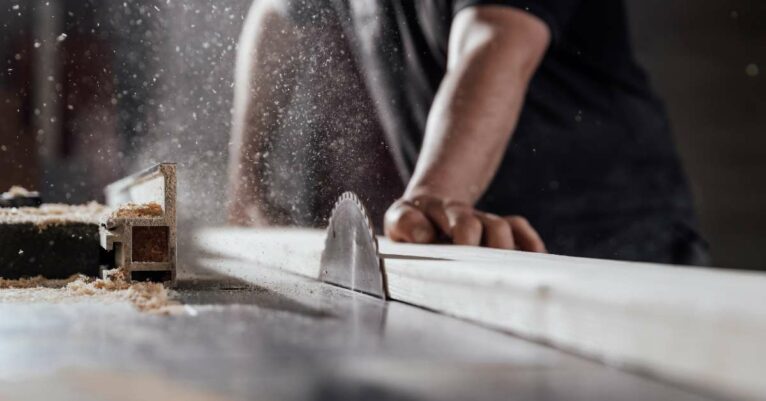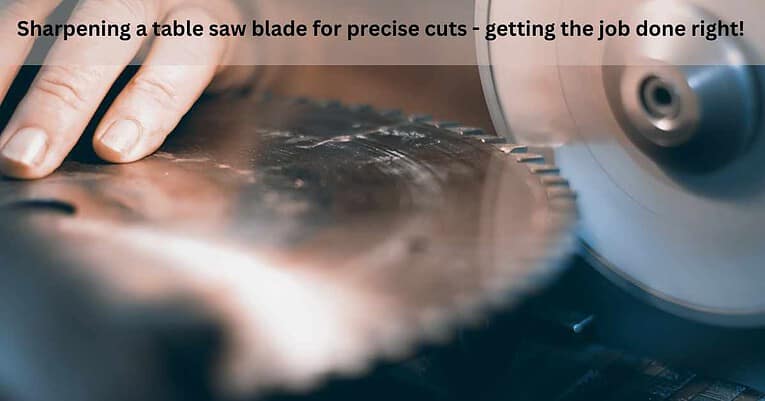How to use a circular saw without a table? [Step-by-Step Guide]
How to use a circular saw without a table?: Introduction
Circular saws are an indispensable tool in a carpenter’s repertoire, providing huge amounts of power and versatility for construction sites, home renovations, or DIY projects. While many users – beginner or experienced – might feel more comfortable using the circular saw with a workbench, it’s possible to use one successfully without relying on the table stand. The guidelines below explain step-by-step how you can do this safely and effectively so that you can increase your precision cuts regardless of the environment. Whether you’re an adept tradesman or just have recently taken up crafting woodworking pieces at home, learning how to expertly operate your circular saw without a table will take your capabilities to new heights.
Understanding the Basics of a Circular Saw
Before unearthing the practical application of a rounded saw without a table, it is imperative to comprehend the rudiments of this equipment. A circular saw is an electrical apparatus that employs a roundish and seamless blade with sharp teeth to trim through distinct sorts of substances such as wood, plastic-type material, metallic plus more. Following will be the fundamental elements with their functions:
- Blade: It’s essentially the most important part that plays cutting functions for this device. The blades appear in various sizes, and types along with the number of teeth depending upon the form and materials being cut down on. A smaller number tooth count kind is generally used for rip cuts (lowering alongside grain) while a higher count style utilizes for cross cuts (relieving across to grain).
- Motor: It supplies electro-mechanical energy to the tool making it possible to reduce at an established speed depending on its power rating. An even more potent engine makes sure quicker and more consistent slicing, particularly on denser small components.
- Base Plate (Shoe): It is a level area uncovered resting atop the surface as soon as the reducing process is performed by the user rest assured his / her circulating saw is appropriately guided all over the activity period. This can certainly further alter the degree slice in the product when needed.
- Depth Adjustment: This particular component offers the capability to adjust the deepness noticed by the user, which allows the front side to stop unnecessary chopping and not damage content hereunder.
- Bevel Modification: It helps modify angle-linked base plate, letting production connect slanted slices or maybe beveled ones if ever appropriate.
- Safe practice Shield: That is certainly a protective cover that provides you with a shield to the blade when the unit is not used. It is programmed to launch when cutting commences, returning over the instrument once the process ended.
- Trigger: This type of particular button works as a beater toward cut-on and even shut down saw operation time frame. Quite a few round saws also come along with personalized safety secret releaser obligatory prior initiator can start any tool consequently avoiding inadvertent on+off situations while working near region.
Knowing each one of these components, and their unique capabilities plus applying this information to real-world settings certainly are cornerstones more confidently managing circular notices without tables in a conditioner workspace establishment plus special trimming techniques.
You may also like:
- Miter vs Circular Saw: Which Reigns Supreme?
- Ultimate Guide: Top-Rated Worm Drive Circular Saws
- Choose the Right Blade: Best Circular Saw Blades for Plywood Cutting
- Compact Circular Saws: Comparison & Reviews
9 Essentials Safety Precautions When Using a Circular Saw
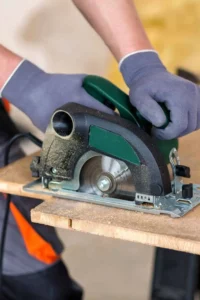
- Personal Protective Equipment (PPE): Always wear appropriate PPE such as safety glasses or goggles that protect your eyes from flying debris, ear protection against loud noises, a dust mask so you don’t inhale particles, sturdy gloves to keep your hands safe, and non-slip footwear to prevent accidental slips whilst working.
- Clear Work Area: Clutter can easily become tripping hazards or get in the way during cutting so maintain your workspace clean and free of obstructions.
- Check Condition of Saw and Blade: Always check your circular saw before use to make sure the blade is sharp and undamaged, that its safety guard is working properly, and that all other parts are in good condition. A dull or damaged blade can cause kickback or binding, leading to potential accidents.
- Understand Kickback: Kickback is a reaction caused by misaligned blades when one side gets pinched, bound up, or displaced causing it to lift out of the workpiece towards the operator in an uncontrolled function. Therefore, having knowledge on how to prevent this type of situation is crucial for safe operation. Ensure you have solid support for your material during cutting so it does not slip, and make sure any part that will fall off (the offcut) is free to move.
- Secure Material: Always make sure your material is securely clamped or held in place before starting a cut. This will avoid it from shifting causing inaccurate cuts or kickbacks when cutting.
- Unplug When Not In Use: To prevent accidental startups, always unplug the saw when not in use and especially when changing blades so you don’t hurt yourself unexpectedly with a live blade still circling under power.
- Don’t Overwork The Saw: Let the saw do work for you – never force it! Pushing too hard on the saw can cause the binding of the blade or overheating of its motor leading to unhealthy working conditions and preventing the successful completion of tasks at hand.
- Maintain Balance And Stability: Make sure to keep your body to one side of the saw instead of directly behind it. This will help you maintain a firm footing and ensure a good center of gravity to complete tasks in a secure function.
Read Manufacturer Instructions: For operations, maintenance, and safety – always read the manufacturer instructions first as they are specially written for using each machine safely.
By following these precautionary steps we can save ourselves injuries while providing an even safer workspace environment all around us.
Preparing Your Workspace
Creating a work area suitable for cutting with a circular saw is essential to safely and successfully completing the job. The best surface to use should be flat and sturdy, as an unstable or uneven one can lead to miscalculated cuts as well as increased risks of the saw or material shifting suddenly. Furthermore, it needs to be able to handle the weight of any materials you’re cutting along with holding them still when performing the cut. To avoid binding up the blade, make sure that whatever will become scraps due from your project is supported in such a way that material won’t catch on it while falling away after it’s been cut off. Good lighting helps provide a better vision of what you are working on so ensure that adequate lighting has been set up in order for workers/operators to have clear sight in their workspace.
One other necessary measurement to take into account is clearing the area of any clutter or objects that might cause obstruct your movements or accidents while operating the saw. Taking these steps provides not only smoother operations but also contributes significantly to a safe and secure work environment when using a circular saw.
Marking and Measuring
Accuracy in marking and measuring is very important while using a circular saw without a table. This helps keep up the accuracy of your cut as well as the general quality of your result. Take after these means to guarantee precision:
- Assess: Firstly, set up the estimations of the cut you need to make. Utilize an accurate measuring tape or ruler to take note of the length, width, or profundity as pertinent and make a stamp on your material for reference purposes. Remember to represent the width of the observed cutting edge (otherwise known as kerf) when setting up estimates.
- Check Reticles: Use a pencil for checking since it gives great clearness and can be effectively wiped out if there’s any mistake. For longer lines, a chalk line instrument will be helpful while straightedges or woodworkers squares can prove to be useful for denoting straight lines.
- Verifying Angles: In the event that you should make an angled cut, utilize an angle measuring device like a protractor or a slanted measure for exactness purposes. Square 90-degree edges can in any case be checked with the assistance of a woodworker’s square instruments.
- Last Check: Continuously twofold check your estimations and markers prior to beginning cutting as this assists avoid with mistakes and hence running after possible wastage of material.
Keep in mind, “Determine twice, cut once” is actually what genuine carpenters accept since it would save time and energy eventually. Taking the extra effort to guarantee accurate estimations and markers will go far in guaranteeing a great outcome.
How to Make a Cut with a Circular Saw
Making a circular saw cut without a table involves several steps. Here is a step-by-step guide to help you through the process:
1. Adjusting Blade Depth: First, switch off the saw for safety. Then adjust the blade so that it extends around 1/4 to 1/2 inch below the material which needs to be cut. This will reduce the risk of kickback and result in flawless cuts.
2. Aligning With Marked Line: Now turn on the saw again and position its base against the edge of the material with its blade aligned with the cutting line properly. Make sure the wider part of the base plate remains in contact with the material throughout the entire cut.
3. Starting Saw Process: Take control of the saw firmly using both hands one on the main handle & other on the auxiliary handle. Trigger the start switch & let its blade reach full speed before it has material contact.
4. Cut the Material: With the blade spinning at max speed, smoothly guide the saw along the marked line using the notch/guide of the base plate for alignment help. Do not force the saw into the cut, allow it to move at its own pace naturally
5. Complete the Cutting: Continue till complete cutting is done, then release control and let the blade slow down until stops completely. Lastly, the offcut should be allowed to fall away without twisting or tipping as near the end of the cut finishes up.
It is very important to maintain control over the saw at all times while working with it in order to avoid any accidents. Hands must be kept away from blades & power cords too must not get inadvertently cut during the process. With little practice & caution, you shall be able to make clean, precise cuts over and again with ease.
Different Types of Cuts: How to use a circular saw without a table?
When using a circular saw without a table, there are several different types of cuts that you can make, each serving a unique purpose. Understanding these cuts can expand your woodworking capabilities and help you tackle a wider range of projects.
• Cross Cut: This is the most common type of cut, made across the grain of the wood. It’s often used to cut a piece of lumber to length. When making a cross-cut, line up the blade with your mark and slowly guide the saw across the wood.
• Rip Cut: A rip cut is made along the grain of the wood usually o reduce the width of a piece of lumber Being able to cu along means it can be harder to push the saw Using a blade with fewer teach will make it easier
• Bevel Cut: This is angled through the thickness of the material and is often used for creating joints and decorative purposes To make a bevel cut adjust the base plate to the desired angle, and mark the cutting line. Then cut as usual
• Plunge Cut Starts in the middle, practical for creating a circuit d that doesn’t extend~ edge Position the front saw’s base plate on the material Tilt forward, then slowly lower the spinning blade into the material
• Miter Cuts are widely used for creating corners – like picture frames. Miter cuts w a circular saw can be accomplished by adjusting the angle of the cutting guide When using power tools remember to always follow necessary safety procedures.
Each type of cut requires different setups and techniques so it is important to understand the differences and practice each one.
Troubleshooting Common Problems
When using a circular saw, there may be some common issues to look out for:
– Rough Cuts: This may be due to a dull or damaged blade. Check the blade and replace it if necessary. Also, ensure you’re using the right type of blade for your needs.
– Inaccurate Cuts: Ensure measurements are accurate and marked correctly; account for the width of the blade in measurements. Make sure the material is securely clamped down before cutting so it doesn’t move during operation. Keep the saw steady and follow the marked line closely.
– Slow Cutting: If slower than normal, this could mean that either the blade is dull or the motor is overheating – replace the blade if needed and give the saw a break for cooling respectively & don’t rush through material, let the saw do its job at its own pace.
– Kickback: Most likely caused by blade binding in the material due to shifting or twisting of the saw during the cut; make sure the material is properly clamped & that offcut will be able to freely move away. Also, keep the saw steady and avoid twisting during operation.
– Saw Doesn’t Start: Check it’s plugged in and the outlet has power, ensure the battery is charged if necessary. If still doesn’t start then might need professional servicing.
Maintenance and Care for a Circular Saw
Keeping a circular saw in top form is essential for optimal performance and longevity. Here are the steps to follow:
• Regularly cleaning the circular saw helps to keep its performance and longevity. Use a soft brush or compressed air to get into hard-to-reach areas and vent slots.
• Always check the blade for sharpness and any signs of damage. Dull or damaged blades are dangerous, so make sure they’re replaced swiftly if necessary.
• Relevant parts should be lubricated occasionally as instructed in the manual of your circular saw’s manufacturer.
• Inspect power cords of corded saws frequently, replacing them immediately if there is any sign of damage.
• After use, store it away in a case/bag for protection from dust; also remember to unplug and retract the blade guard before giving it into storage!
• Professional servicing may be needed occasionally; see the manual for safety measures and maintenance instructions.
Conclusion
Working with a circular saw may appear intimidating initially, but mastering the fundamentals of using this tool, plus having an understanding of proper safety steps and techniques makes it easier to manage. To maximize success when sawing, prepare your workspace carefully and make sure you have accurately marked all measurements. In addition, there are numerous types of cuts that can be done as well as potential troubleshooting should any issues arise during use. Regular maintenance and care for the circular saw is necessary too in order to extend its life cycle and better guarantee safety while working. Respectful observance of these recommendations will give you the confidence needed to complete various projects with accuracy. Patience is key here so take your time while gaining proficiency in this field.

